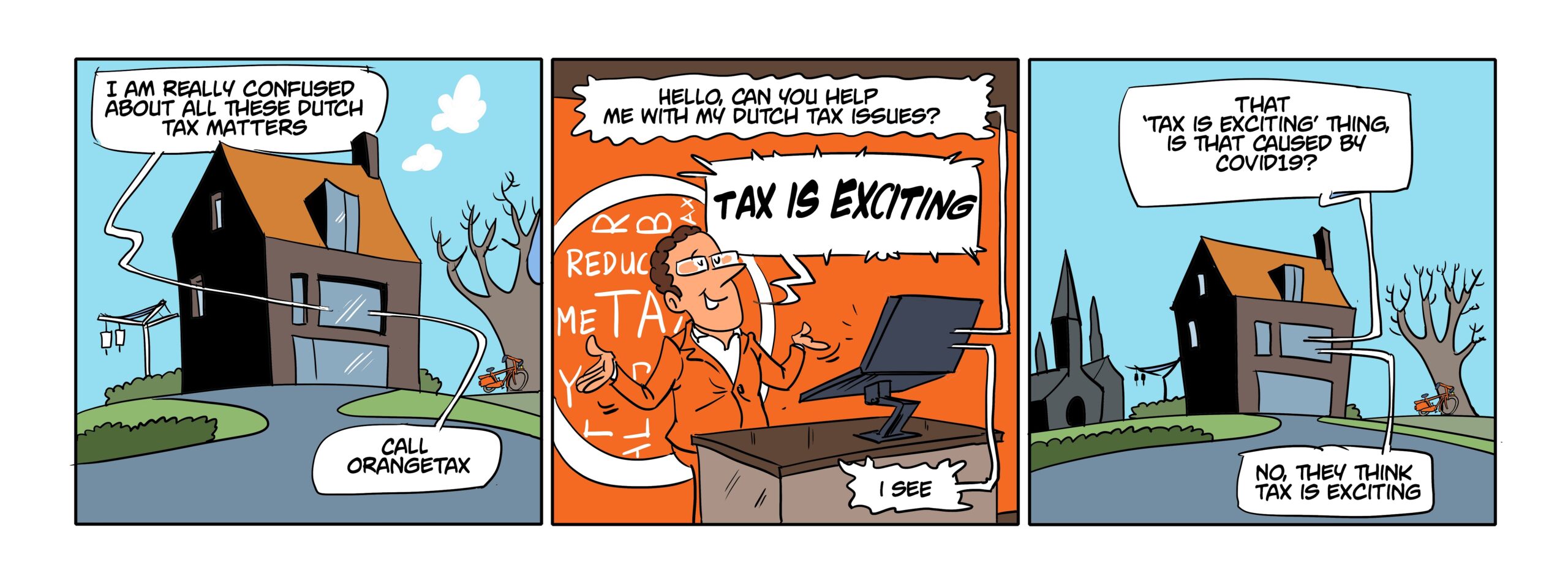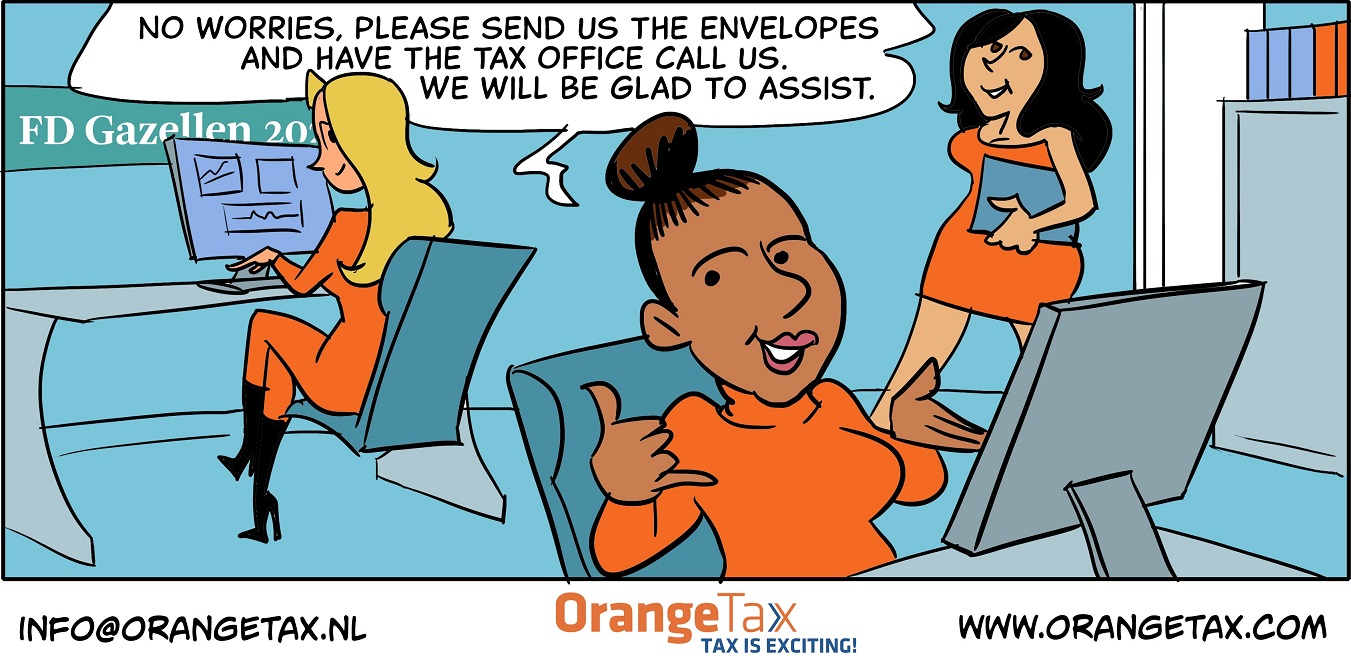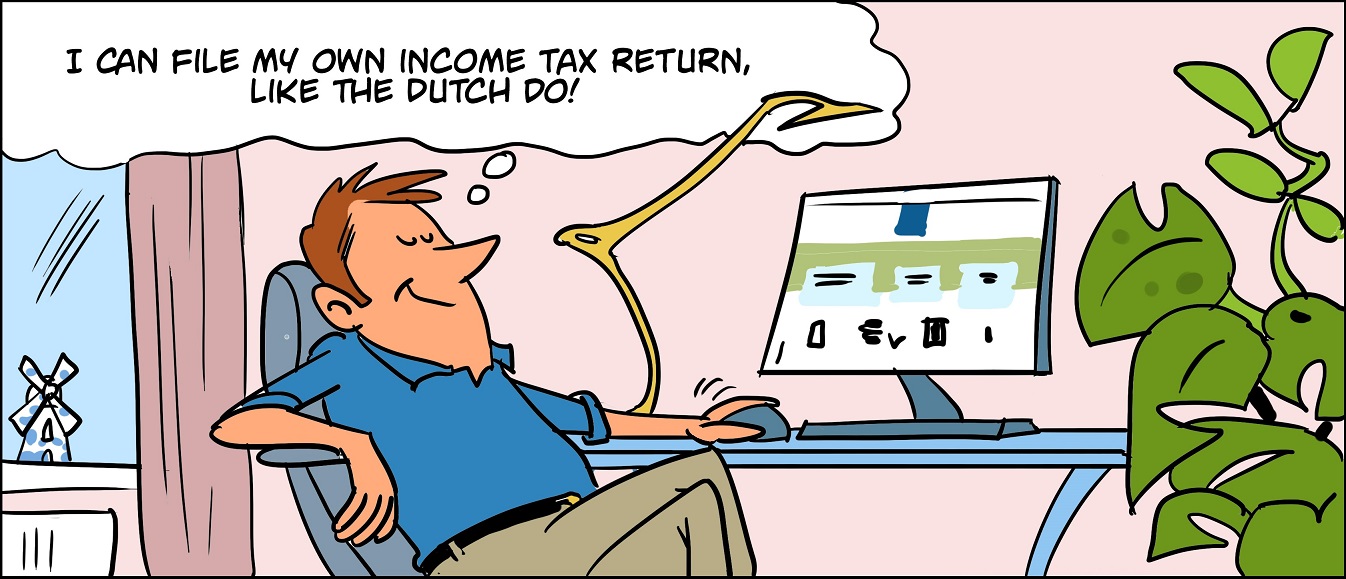In the Netherlands we try to simplify the income tax by putting it in boxes. We have Box 1 for income such as employment income, profit, zzp etc. In Box 2 are the proceeds like dividend from a company in which you hold at least 5% of the shares. And in Box 3 are your world wide assets taxed.
Box 3 tax old style up to and including 2016
In the current state you are charged 1.2% tax over your world wide assets. Valuation time is January 1 of each tax year. Each tax resident has a tax free amount of about EUR 24.437 (2016), but above that amount you are taxed at 1.2%.
Example. You have EUR 124.437 in your French bank account, but you work and live in the Netherlands. Then you are taxed at 1.2% over EUR 100.000 being EUR 1200.
The problem with this system you find already when the system was introduced in 2001. At that time the calculation was sold to us like this: we assume you make a 4% yield over your assets and we tax that at 30% tax. Hence the 1.2% taxation. At the same time, with the fatherly finger pointing in the air, the minister of finance stated that if the interest rate on bank balances would increase, that would also imply the taxation would increase. At that time it was asssumed that if the interest would go to 5%, the tax would be 30% of 5% being 1,5% Box 3 tax.
A pity that the minister of finance is not consequent, as the interest has dropped to about 0,5% over your bank balance, which would result in 0,15% Box 3 income tax.
Of course our King cannot pay his costs at only 0,15% tax so the treasury needs to be filled. But the people in the street started complaining. They are not stupid, they can do the math. They have for instance EUR 20.000 subject to tax. Taxed at 1.2% being EUR 240 Box 3 income tax. But at the same time they receive 0,5% interest being EUR 100. So the tax rate in this example is 240%.
Jurisprudence of the EU court has ruled already many years ago in case of a Hungarian woman that was dismissed and her severance payment was taxed at 101%, that this was exploitation by the Hungarian tax office. Currently the Dutch are being exploited by the Dutch tax office and much more severe than the Hungarians have done.

New Box 3 tax system
Therefore as per January 1, 2017 a new Box 3 tax system is being introduced. The thought must have been, if we make it more complex, the people in the street will complain less, as they simply do not understand. Keep them stupid.
Table calculation yield from assets from 2017
| Bracket | Your Box 3 tax base | Percentage 1,63% | Percentage 5,5% |
| 1 | Up to € 75.000 | 67% | 33% |
| 2 | From € 75.001 up to € 975.000 | 21% | 79% |
| 3 | From € 975.001 | 0% | 100% |
How to explain this Box 3 tax calculation?
I would like to use the example the tax office used:
You are alone and have € 125.000 savings
You are a single tax resident and you have € 125.000 savings. You have no debts and in 2017 the tax free amount is EUR 25.000, so EUR 100.000 of your Box 3 savings are subject to taxation.
The amount of EUR 100.000 exceeds bracket one of Box 3, which implies two brackets are involved in the calculation. One of EUR 75.000 in bracket one and EUR 25.000 in bracket 2.
| Bracket in box 3 | Totaal amount in bracket | Spread over two rates per bracket | Percentage | Yield |
| 1 | € 75.000 | 67% x € 75.000 = € 50.250 | 1,63% x € 50.250 | € 819 |
| 1 | € 75.000 | 33% x € 75.000 = € 24.750 | 5,5% x € 24.750 | € 1.361 |
| 2 | € 25.000 | 21% x € 25.000 = € 5.250 | 1,63% x € 5.250 | € 85 |
| 2 | € 25.000 | 79% x € 25.000 = € 19.750 | 5,5% x € 19.750 | € 1.086 |
| Total yield box 3 | € 3.351 |
The calculation of your Box 3 taxation is as follows:
67% of the € 75.000 is € 50.250 is subject to 1,63% assumed yield, which is € 819.
33% of the € 75.000 is € 24.750 is subject to 5,5% assumed yield, which is € 1.361.
Your Box 3 bracket one yield is therefore € 2.180 (€ 819 + € 1.361).
In bracket 2 the calculation is as follows:
21% of € 25.000 is € 5.250 is subject to 1,63% assumed yield, which is € 85.
79% of € 25.000 is € 19.750 is subject to 5,5% assumed yield, which is € 1.086.
Your Box 3 bracket two yield is € 85 + € 1.086 = € 1.171.
The Box 3 bracket one and two are added, being € 2.180 + € 1.171 = € 3.351. The Box 3 tax rate is still 30%, hence you are due EUR € 1.005.
Compare old and new style Box 3 tax calculations
Old style Box 3 over EUR 125.000 assuming EUR 25.000 is the tax free amount is simply 1.2% being EUR 1200.
New style is a complex calculation ending at EUR 1.005, being basically 1% over the Box 3 base.
In my opinion it has been made extremely complex, in a time where the Government communicates that they would like to be in close contact with the public. In my opinion this new calculation is distancing the rulers from the voters.
What is the philosophy behind the new difficult calculations?
The Government is trying to sell that people with more money can make more yield, hence they should pay more tax. I think that is not true.
Better, and more in style with the socialistic country we are, is to simply state. If you have more, you need to contribute more. Simple as that. That could also be arrange with a much more simple calculation.
For instance, the first EUR 200.000 is taxed at 1% Box 3 tax and the amount exceeding EUR 200.000 at 1.2% taxation. A calculation everybody can do while riding the bike.
Orange Tax Services
The Government has added a new task to the occupation of being a tax advisor. Most people do not trust the tax office, hence they want an independent person recalculate the complex mathematics of Box 3. We are happy to assist in 2018 filing your income tax return with Box 3 taxation or already in 2017 you preliminary assessment.





